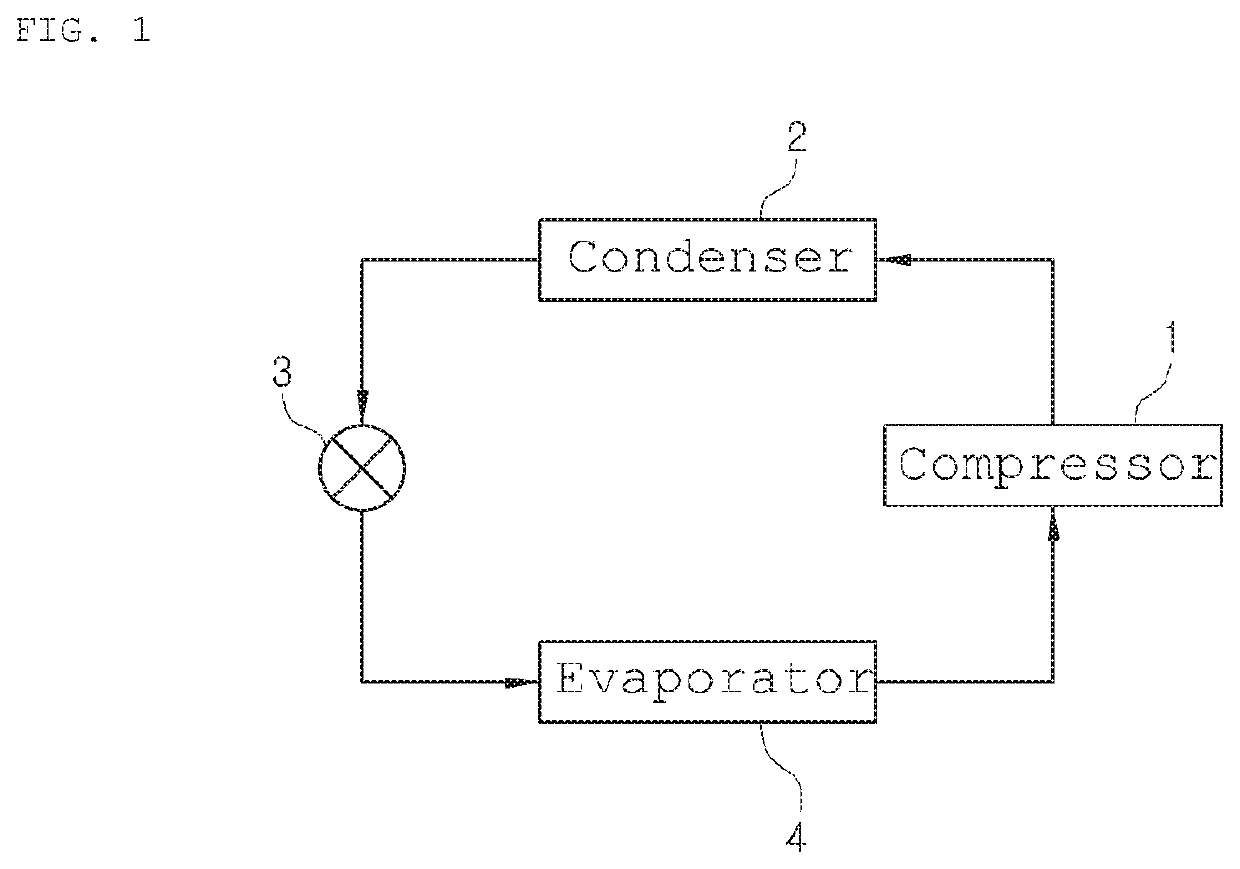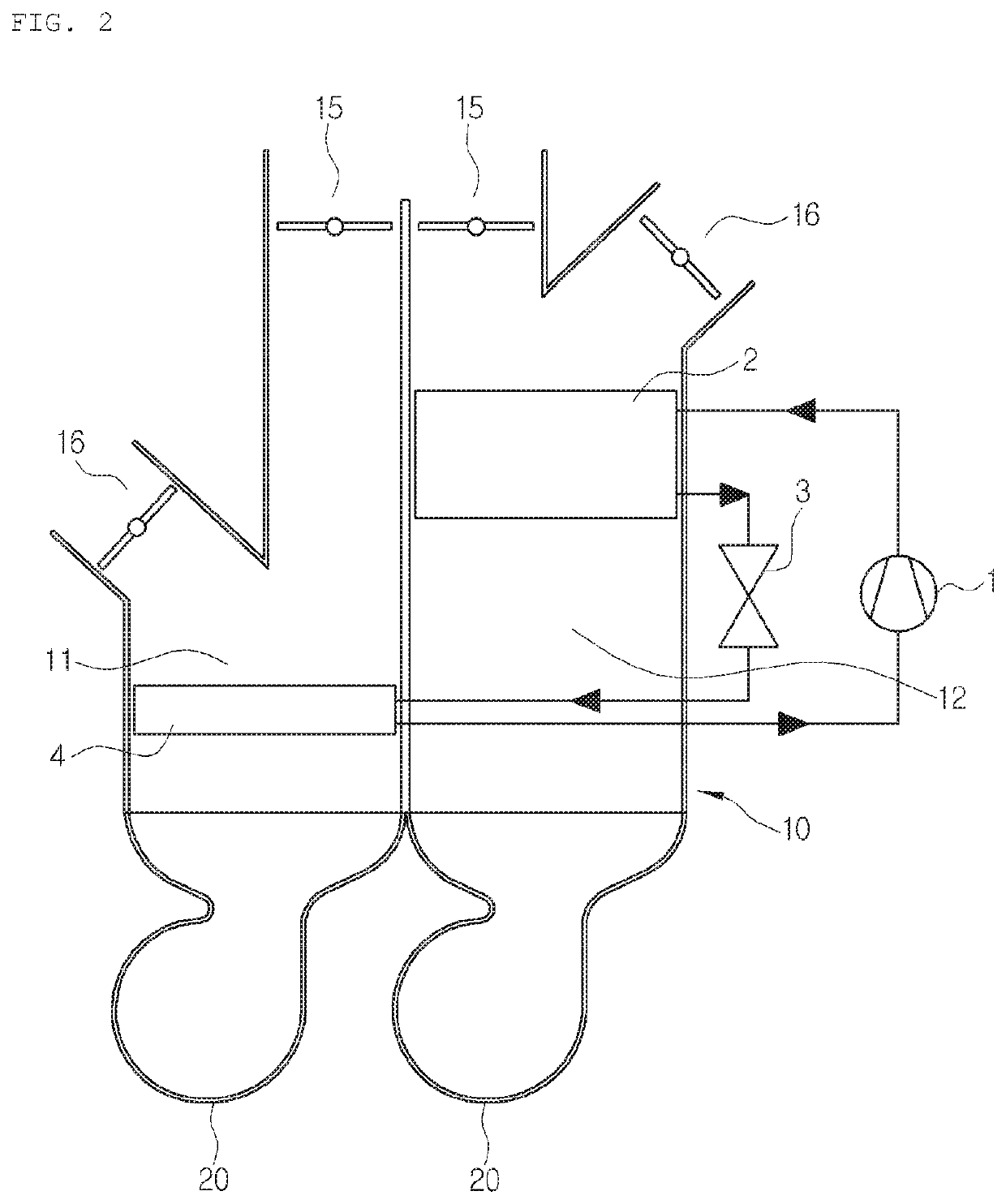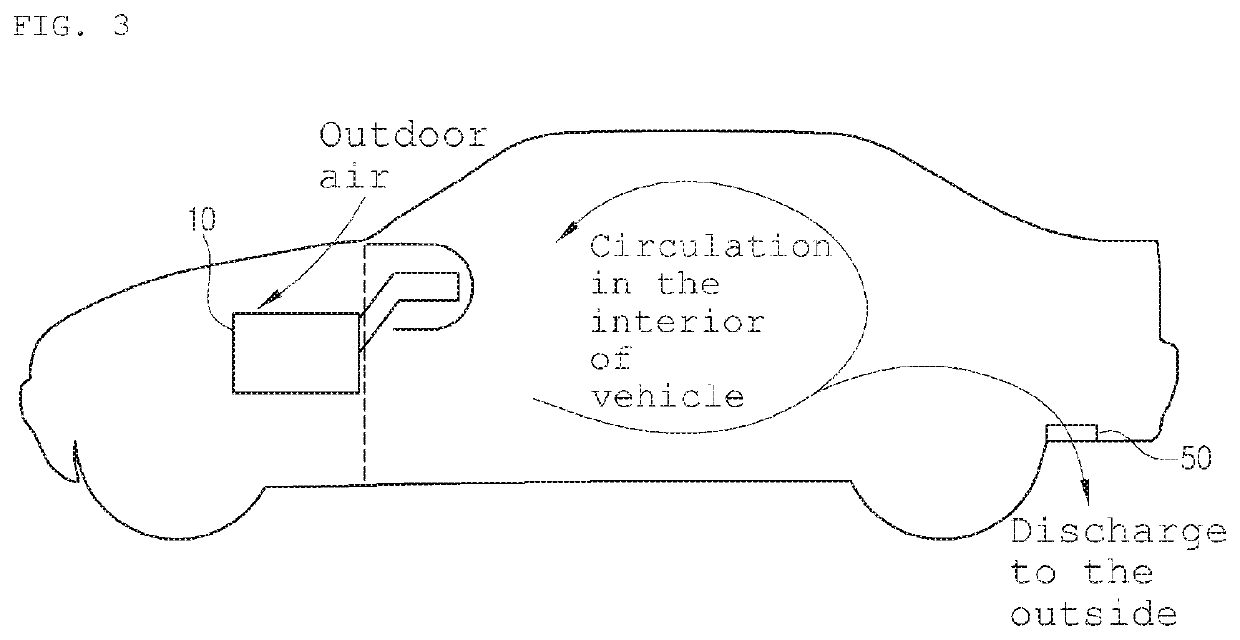Air conditioner for vehicle
a technology for air conditioners and vehicles, applied in vehicle components, vehicle heating/cooling devices, transportation and packaging, etc., can solve the problems of fluidity, inability to quickly discharge out air heated in the interior of the vehicle in summer, etc., to reduce the density of carbon dioxide inside the vehicle, enhance fogging speed, and enhance air blast efficiency
- Summary
- Abstract
- Description
- Claims
- Application Information
AI Technical Summary
Benefits of technology
Problems solved by technology
Method used
Image
Examples
first embodiment
[0060]FIG. 4 is a perspective view of an air conditioner for a vehicle according to the present invention, and FIG. 5 is a partially perspective view of a blower unit of the air conditioner for a vehicle according to the present invention.
[0061]As shown in FIGS. 4 and 5, the air conditioner for a vehicle according to the present invention includes a compressor (not shown), a condenser 102, expansion means (not shown) and an evaporator 104, which are connected with one another in sequence through a refrigerant circulation line (not shown), so as to carry out cooling through the evaporator 104 and carry out heating through the condenser 102. Description of the refrigerant circulation process will be omitted since the refrigerant circulation process is obvious to those skilled in the art.
[0062]In the above-mentioned refrigerant circulation process, the air blown by a blower unit 130 is introduced into the air-conditioning case 110, is cooled by the evaporative latent heat of the liquid...
second embodiment
[0138]FIG. 17 is a sectional view showing a filter unit according to the present invention.
[0139]As shown in FIG. 17, the filter unit 250 is disposed to be refracted along an air inhalation channel, and may be formed in a streamlined shape for a smooth introduction of the air to the blowing fans 132 and 136. For instance, the filter unit 250 may be formed in a convex shape in the reverse direction of the air inhalation channel of the blowing fans 132a and 136.
[0140]Furthermore, the first filter 251 has a plurality of filter holes 251a, and the filter holes 251a are expanded to get wider toward the blowing fan 132. The air inhalation channel directing from the indoor air inlet 142 to the blowing fan 132 illustrated in FIG. 16 is formed in the top-left direction from the lower portion. In this instance, the air channel in the top-left direction may horizontally enter into the blowing fan 132 after colliding against the gradually expanded filter holes 251a. Therefore, the channel of th...
third embodiment
[0141]FIG. 18 is a sectional view showing a filter unit according to the present invention.
[0142]As shown in FIG. 18, the filter unit 250 has filter holes 251a, which are formed in a hexagonal honeycomb shape. In this instance, the honeycomb-shaped filter unit 250 according to the present invention may be formed integrally with the inlet ring 131a. Moreover, the honeycomb-shaped filter unit 250 has a predetermined thickness so that the channel of the air inhaled to the blowing fan 132 through the filter holes 251a is formed uniformly, thereby enhancing blowing performance.
PUM
 Login to View More
Login to View More Abstract
Description
Claims
Application Information
 Login to View More
Login to View More - R&D
- Intellectual Property
- Life Sciences
- Materials
- Tech Scout
- Unparalleled Data Quality
- Higher Quality Content
- 60% Fewer Hallucinations
Browse by: Latest US Patents, China's latest patents, Technical Efficacy Thesaurus, Application Domain, Technology Topic, Popular Technical Reports.
© 2025 PatSnap. All rights reserved.Legal|Privacy policy|Modern Slavery Act Transparency Statement|Sitemap|About US| Contact US: help@patsnap.com



